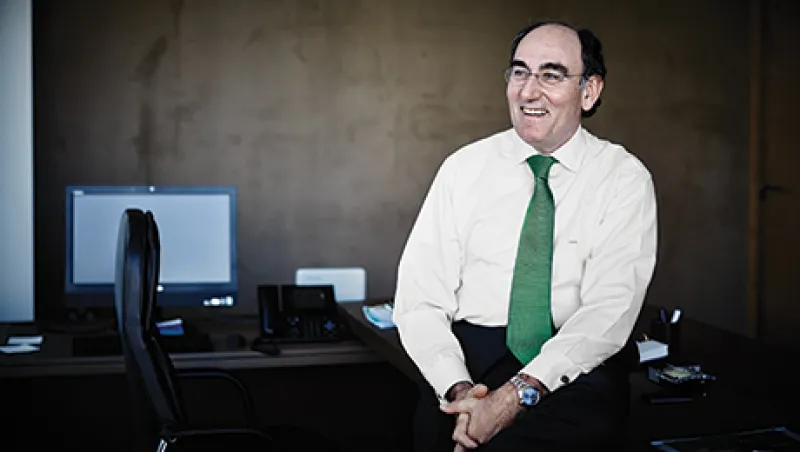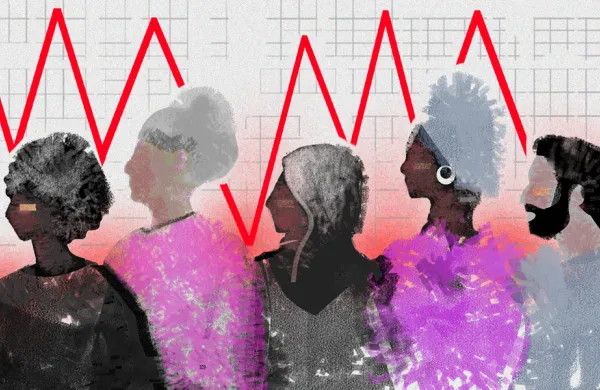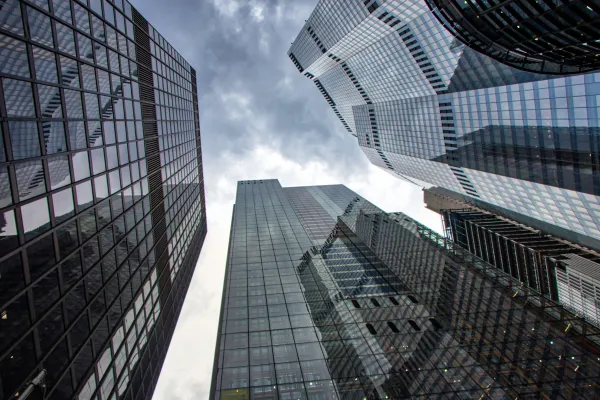Ignacio Galán wants to escape Europe for American regulation. His strategy isn’t as crazy as it sounds.
Galán is chairman and CEO of Iberdrola, which he has built over the past 14 years into Spain’s largest electric utility and a leader in Europe. He has diversified into the U.K., where the group owns Scottish Power, and built energy generation, transmission and distribution businesses in Brazil, Mexico and the U.S.
In addition, befitting its leafy logo and Galán’s customary bright green tie, Iberdrola boasts one of the world’s largest renewable-energy platforms. The company has some 14,000 megawatts of installed wind power capacity, mainly in Spain and the U.S., and it plans to develop big offshore wind farms in France, Germany and the U.K. Overall, Iberdrola generates about 56 percent of its power from wind, hydroelectric and nuclear sources, and a further 35 percent from efficient combined-cycle gas turbines. The Bilbao-based company, in short, seems tailor-made for a world that increasingly prizes renewable energy and small carbon footprints.
Yet Iberdrola faces plenty of challenges. Excess generating capacity, high taxes and regulations and subsidies favoring wind and solar energy have depressed wholesale power prices in Europe and imposed hefty costs on grid operators — including Iberdrola, notwithstanding the subsidies it gets for its wind business. Spain’s deep recession cut power demand in the country, a trend that only began to reverse last year, while cuts in public subsidies for renewable energy cost the company €339 million ($363 million) in 2014. Iberdrola’s earnings fell 9.5 percent last year, to €2.3 billion, while revenue dipped 3.4 percent, to €30 billion. The company’s share price jumped 21 percent over the 12 months to March 17, to €5.94, but remains nearly 50 percent below its peak, in 2007. The recent gains come largely from Mario Draghi: Aggressive monetary easing by the European Central Bank president has pushed yields on ten-year Spanish government bonds within a hair of 1 percent, making Iberdrola’s 4.5 percent dividend yield very attractive.
Galán is responding to the pressure on two fronts. He is lobbying, as part of a group of ten leading utility executives, for the creation of a European energy union that would impose lighter, common regulations and tariff rules across the European Union. With Europe’s electricity costs roughly double the U.S. average, such changes are vital to the bloc’s broader economic competitiveness, he asserts.
He is also moving faster to diversify Iberdrola, particularly into regulated North American markets, where he hopes to generate solid and predictable earnings. In February he moved to expand the group’s U.S. operations by agreeing to acquire UIL Holdings Corp., a Connecticut-based electric and natural-gas utility, in a stock-and-cash transaction valuing UIL at $3 billion. The deal, if approved, would create a utility with 3.1 million customers in Connecticut, Maine, Massachusetts and New York State; earnings before interest, taxes, depreciation and amortization of $2 billion; and $556 million in net income. The deal would boost Iberdrola’s dollar-based earnings to 26 percent of the total from 22 percent — a welcome addition as the euro falls toward parity.
Iberdrola has also taken advantage of Mexican President Enrique Peña Nieto’s recent liberalization of his country’s energy market to begin work on four thermal power plants and two wind farms in Mexico.
For a man who turns 65 this year, Galán shows few signs of slowing down and retiring to his farm near Salamanca, in western Spain. He spoke recently with Institutional Investor International Editor Tom Buerkle.
Institutional Investor: Is Spain definitely out of the crisis?
Galán: Yes, Spain is now. The International Monetary Fund revised once again its expectation for growth, to 2 percent for the year. We are already becoming the engine of the euro zone in terms of growth. People have adapted to the new environment. Companies have been adapting themselves with more flexibility, changing the production model to a different one. Before, to create jobs, the country required growth of 3 percent. Now, with growth of less than 1 percent, we are already creating jobs.
Certain reforms have been a little more difficult for your actual business, though.
Europeans are already suffering from a lack of productivity, a lack of competitiveness, in the electrical sector. Not because we are less efficient than our colleagues in America or in other countries. It’s because we have been treated for years in the European Union as if the electricity tariff is a basket in which anything can be put — charges, obligations, subsidies, whatever.
Take the example of Spain. Hydro is very efficient. Hydro is very clean. But we have to pay almost 50 percent taxes on the price just to subsidize technologies, such as solar thermal, that are not competitive. In Germany they are subsidizing certain technologies that are immature and they are burning more coal than ever, so the emissions are growing.
What does Europe need to do?
The positive thing is that we are being listened to. Since we created the Magritte Group of the top ten largest utilities in Europe, we’ve been meeting the leaders of the European Commission and the heads of government of most of the countries in Europe. Energy is at the top of the agenda.
We’ve been claiming that Europe requires an energy union. We cannot have every country having their own rules, their own regulations. The commission has created a vice presidency for energy union. The commissioner [Maroš Šefcovic] is absolutely aware of the problem. Things are moving. The problem is they have to move faster.
Where are you looking to grow Iberdrola?
Our strategy is very clear and very focused in four areas. In emerging countries Mexico and Brazil are our priorities. The reform made by Peña Nieto gives us much more opportunity in Mexico, where we are the second-largest producer of electricity. We have four power plants under construction, and we will probably announce more new investment in the future.
What are your ambitions in the U.S.?
We are present in 24 states. We are the second-largest producer of wind electricity in the country: Almost 10 to 15 percent of the green electricity in the U.S. is produced by Iberdrola. And we are concentrated in very regulated businesses in the Northeast. We have distribution in the states of New York and Maine.
Why is our priority there? You’re American; you’ve suffered the consequences of outdated regulation, trying to minimize the cost for consumers and minimizing the investment in networks for years. The network has deteriorated, and now it requires an extraordinary investment.
Would you expect to grow the U.S. as a share of your global footprint?
Oh yes. In Maine we are practically doubling the size of our transmission assets. We are continuing to invest in wind farms. And our trend is to continue growing.
You’re a huge producer of renewable energy, yet the biggest trend in energy these days is the collapse of the oil price. Does that pose a threat?
Our plans are to invest for 60 years in most of the countries where we’re present. Talk to a politician or a prime minister about 60 years, and they say, ‘What are you talking about?’ But that is natural for our business. In 60 years’ time prices go up and down, but we have to look long, long term. We cannot modify our strategy just because something can change.
But won’t cheap oil undercut some high-cost renewable projects, just like it’s affecting deepwater oil exploration?
With wind farms the only cost we have is the financial cost. We don’t have variable costs. So I think we can look long term. We will continue with our plans. The [regulatory] framework is more important for us. We are not afraid of changes of market prices. We are afraid of changes that the regulator can make any time — in certain countries, with retroactive measures.
Carbon pricing is dead in the U.S., yet you have said the decline in oil prices offers a chance to move ahead on carbon pricing. Why?
The Paris meeting of the United Nations Climate Change Conference in December is probably the last opportunity in our generation to modify the emission trends of the past 30 years. If world leaders are not concerned enough, we are going to pass to our children a world that can be in a very, very risky situation. If the concern is a fear of losing competitiveness, now is the opportunity, because we can make the carbon market work properly without increasing the cost of the energy to most consumers. And that will be very useful for switching from dirty technologies to clean technologies. It’s a unique opportunity.
How confident are you that governments are going to take that opportunity?
At the U.N.’s Lima meeting [in December 2014], all members attending committed themselves to take action to reduce carbon emissions. The Americans are already announcing a certain reduction up to 2020. The Chinese will not grow emissions more than GDP. Europe has already committed to a 40 percent reduction of carbon emissions by 2030 and 20 percent by 2020. So I think we are accelerating the process.
Doesn’t that imply that renewable groups like yours should be investing more in Europe?
Europe needs more energy efficiency, to switch from dirty technologies to clean technologies. It’s not a question of subsidization; it’s a question of using the market mechanism to make that happen. It’s not that we need in some countries to pay subsidies of €500 for solar power generation while for wind we have €80. Let’s switch to those technologies that are economically viable, using the price of carbon as the mechanism for switching.
The euro zone doesn’t figure prominently in your plans. Does that suggest a lack of confidence?
No, we are starting a huge wind farm in Germany. But there are fewer opportunities in the euro zone. We are looking for big-sized projects. In France we sold 30 small wind farms. It makes no sense to have 100 megawatts in a country. We are moving in billions. Anything with million, we are not interested.
A World Economic Forum panel you chaired said developed countries would need to spend nearly $8 trillion by 2040 to upgrade their electricity networks. The World Bank estimates it will cost $1 trillion to light up Africa. Where is all this money going to come from?
There’s a lot of liquidity in the world. Our last bond issue was for eight years at a yield of 1.1 percent.
If you want the money to flow, you need the right framework: clear, sustainable, predictable and remunerative. This sector requires 60-year decisions. If you change the rules, don’t expect that the money is going to flow. •
Follow Tom Buerkle on Twitter at @tombuerkle. Visit his blog, “The Globalist.”






